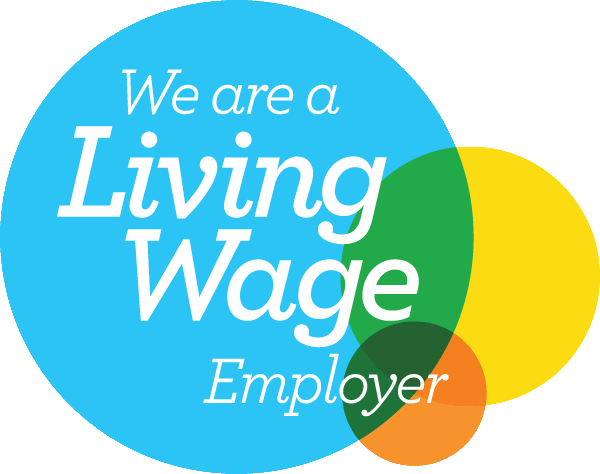Self-harm among adolescents is a growing problem. Registries of hospital treated self-harm in the U.K. and Ireland both report the highest rates in younger age groups. Clinicians in Child and Adolescent Mental Health Services (CAMHS) also report an increase in the number of adolescents presenting to their services with self-harm and/or suicidal behaviour in recent years. Despite the large number of adolescents and their families requiring support, interventions for this group of individuals are still quite limited. One intervention with an emerging evidence base for treating emotionally dysregulated adolescents with self-harm/suicidal behaviours is dialectical behaviour therapy for adolescents (DBT-A).

Clinicians in CAMHS across Ireland have sought training in DBT-A to treat the increasing number of adolescents presenting to their services with self-harm and/or suicidal behaviour. With a growing national interest in DBT provision in community services, the National DBT Project Ireland was established in 2013 to coordinate training and implementation of DBT (in both adult and child/adolescent services) in the Irish public health service. During the initial two years of the project (2013-2015), seven CAMHS teams trained in DBT and delivered a 16-week DBT-A programme, the recommended treatment duration at that time. The implementation and evaluation of the 16-week DBT-A programmes delivered by these CAMHS teams across Ireland was examined and is reported in another article by the authors. Significant improvements were found for adolescents on all outcome measures including frequency of self-harm and suicidal ideation. Positive outcomes were also reported for parents who attended the 16-week skills groups with their child.
In 2015, a further three CAMHS teams completed DBT training through the National DBT Project. Concurrently at this time, the DBT-A treatment developers revised guidelines recommended that the programme duration be increased from 16 to 24 weeks in order to give more time to sufficiently cover the material. Given these revised guidelines, a number of DBT-A teams who had trained through the National DBT Project opted to extend their programmes to a 24-week intervention, which was also evaluated by the National DBT Project team.
Previous studies of DBT-A have reported on various lengths of treatment; therefore an optimal treatment duration for DBT-A has not yet been identified. To date, no study has compared the outcomes of DBT-A programmes of different durations. The aim of our study was to compare the 16-week and 24-week programmes delivered by CAMHS teams in Ireland to determine whether a longer DBT-A programme would yield improved outcomes for participants.
We compared data from 84 adolescents and 100 parent/guardians who participated in a 16-week DBT-A implementation of the programme to 68 adolescents and 67 parent/guardians in a 24-week implementation of the programme. For adolescents, we examined outcome measures including presence and frequency of self-harm, suicidal ideation, depression and DBT skill use. For parents, we examined levels of burden, grief, and parental stress. Data were collected at both pre- and post-intervention using self-report and clinician-reported measures.
Significant positive outcomes were found for both the 16-week and 24-week programmes. When comparing the interventions, greater reductions were reported in the 24-week programme on measures of suicidal ideation and depression. Both interventions reported a 25% decrease in the number of adolescents who were self-harming at post-intervention. However, there was a higher drop-out rate in the 24-week programme (29.4% vs. 15.5%). There were no differences between groups on outcomes for parents.
By comparing these two treatment durations, it was hoped that clinicians and managers would be better informed when considering the optimal treatment length of DBT-A programmes in public community settings. The results of both programmes were similar; statistically significant improvements were found on all outcome measures from pre- to post-intervention. The findings however did suggest that 24-week DBT-A may have additional benefits in comparison to 16-week DBT-A in terms of further reductions in suicidal ideation and depression. Due to the nature of our study, it was not possible to measure outcomes for the two groups at both 16 weeks and 24 weeks. As a result, it is not possible to determine whether the more positive results in the 24-week group are due to the extra eight weeks of intervention or due to the passage of time.
The differences in drop-out rates for the two programmes must also be considered in the context of the results as it may have important feasibility implications. Given the high level of risk associated with self-harm and emotional dysregulation, the shorter 16-week programme may be preferable in order to retain more participants. Despite the drop-out rate being higher for the 24-week group, it is important to mention that this figure is comparable to other DBT-A studies.
It is possible that by having a longer programme, additional benefits may be observed for individuals participating in DBT-A. However, in order to provide an extended treatment, there is an increased resource and time commitment required by DBT therapists. Therefore, future research will need to focus on an economic evaluation to compare the economic effectiveness of the 16-week and 24-week DBT-A programmes. This will provide important information in determining optimal levels of clinical input to yield positive outcomes for clients. Future research might also consider long term follow-up to identify if gains made at post-intervention are maintained for participants who complete 16-week and 24-week DBT-A.
This article is a summary of the paper published in CAMH – Gillespie C, Joyce M, Flynn D, Corcoran P. (2019). Dialectical behaviour therapy for adolescents: a comparison of 16‐week and 24‐week programmes delivered in a public community setting. Child and Adolescent Mental Health. doi: 10.1111/camh.12325
Key points
Clinical practice
- Significant improvements on constructs such as self-harm behaviour and suicidal ideation were reported in both 16-week and 24-week DBT-A programmes.
Service development/delivery
- 24-week DBT-A programmes may be more effective in reducing suicidal ideation and depression.
Gaps and recommendations for further scientific enquiry
- Further research is required to identify optimal treatment duration of DBT-A.
- Longitudinal studies are required to explore treatment outcomes for 16 versus 24-week interventions in the longer term.
About the Authors

Conall is a Trainee Clinical Psychologist in the Health Service Executive (HSE), Ireland. He is currently completing the Doctor of Clinical Psychology in University College Cork, Ireland.

Daniel is a Clinical Psychologist and Principal Psychology Manager co-ordinating Adult and Child/Adolescent Mental Health Services in the HSE across counties Cork and Kerry, Ireland and is Adjunct Professor at the School of Applied Psychology University College Cork, Ireland. His clinical interests are in working with individuals who struggle to regulate emotions and engage in high risk self harm behaviours. He is also interested in the impact of these behaviours on families
A pdf version of this article is available to download from the sidebar.



